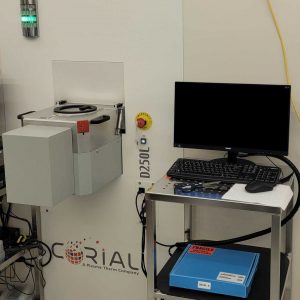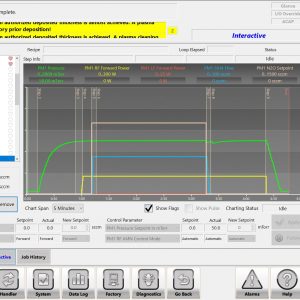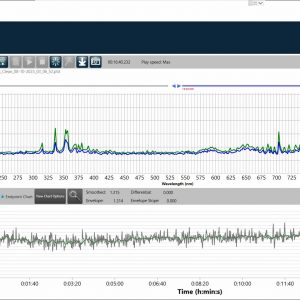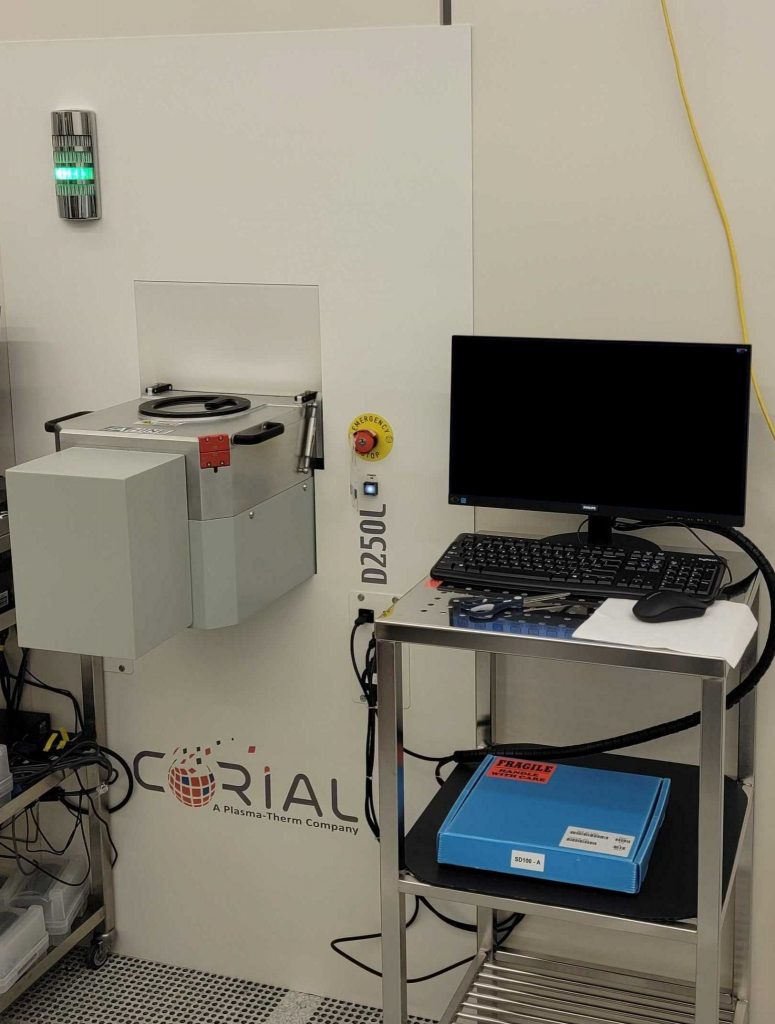
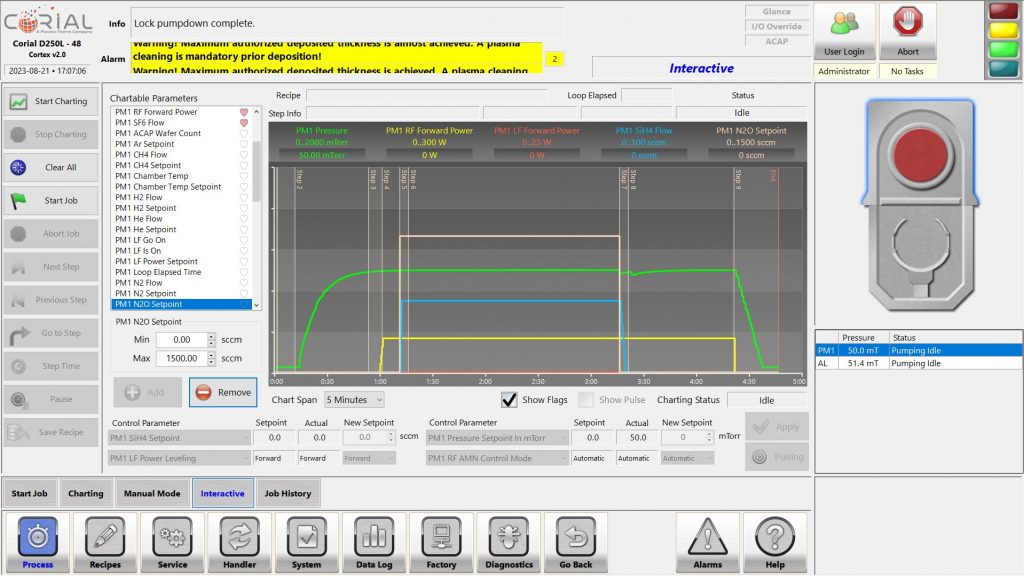
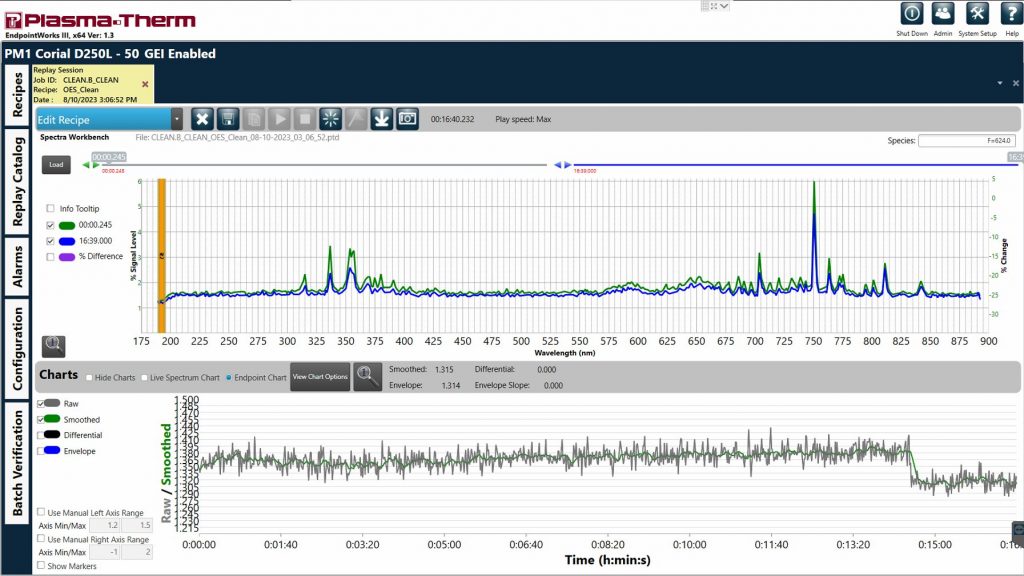
Restrictions and Precautions
Au, Ag, Cu, Fe, PZT, Photoresists and any other heat sensitive materials
The shuttle is hot (300°C) when unloaded from the reactor. Please be cautious.
Plastic tweezers are not allowed to load/unload samples on the shuttle. Please only use metallic tweezers.
Contents
- Introduction
- Equipement description
- Available Materials and Chemistries
- Recipes
- How to use the system
I. Introduction
The D250L is an equipment allowing the deposition of SiOx, SiN, aSi, SiC, and SiON layers on 100 mm wafer by PECVD.
PECVD stands for Plasma Enhanced Chemical Vapor Deposition. The process uses a plasma in which two precursor gases (Vapor) are ionized and react to form a solid thin film on the substrate. The remaining gaseous byproducts of the reaction are evacuated by the pumping line.
The plasma is generated by radio-frequency (RF) alternative current discharge between two electrodes.
II. Equipement description
The D250L is composed of vacuum load-lock and an isothermal high temperature (up to 320°C) and pressurized plasma reactor.
Substrate holder
A shuttle is used as substrate holder and to transport the sample from the load-lock to the reactor. This carrier acts as the anode once inside the reactor. The substrate holder can accomodate :
- 1 x 100 mm wafer
- Chips.
Pumping
Pumping in the system is achieved by :
- Primary pumping: PFEIFFER VACUUM A124H Dry Pump.
- Secondary pumping: PFEIFFER VACUUM ATH 500 M ISO 100 turbomolecular pump.
Symmetrical pumping design to ensure excellent uniformity.
Pressure
The process pressure range is from 0.2 T to 2 T.
Temperature
Isothermal reactor with temperature between 300 °C ± 20°C.
Generators
- RF 13.56 MHz generator.
- LF Generator
End-point Detection
The D250L is equipped with an optical emission spectrometer (OES) for end-point detection (EPD). The EPD’s main task is to automatically terminate in-situ plasma cleaning thus assuring reactor cleanliness and absence of unnecessary overetch of the reactor.
During deposition processes the OES spectrometer can be used in interferometry mode (OEI) to control film thickness and to automatically terminate deposition as the desired thickness is reached.
Control Software
The D250L control software comprises Cortex® for process control and EndpointWorks® for endpointing.
Cortex® allows for intuitive recipe setting and implementation of processes. The software may be used in fully automated mode using already defined recipes or in interactive mode for recipe adjustment ‘on-the-fly’.
EndPointWorks® is used to manage EPD recipes for plasma cleaning and deposition control mainly basing on OES/OEI, but it can also use system parameters (such as process pressure, etc) as endpoint triggers.
III. Available Materials and Chemistries
Available gases :
- H2
- He
- CH4
- Ar
- SF6
- N2
- N2O
- NH3
- SiH4
Available materials to be deposited :
- SiOx
- SiN
- SiOxNy
- aSi
- SiC
IV. Recipes
V. How to use the system
Please refer to the following instructions to operate the tool :
